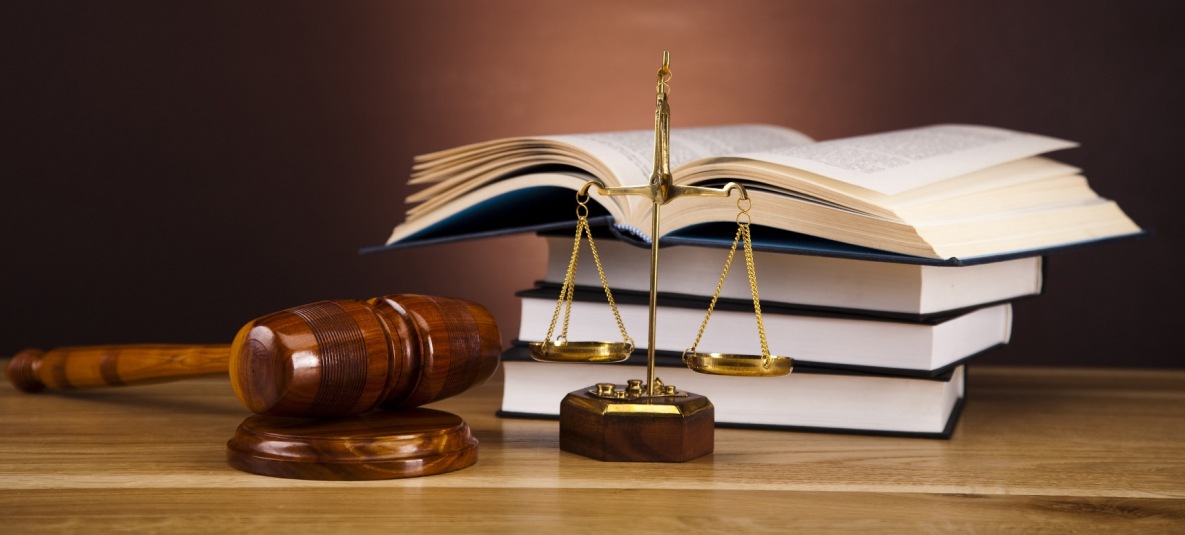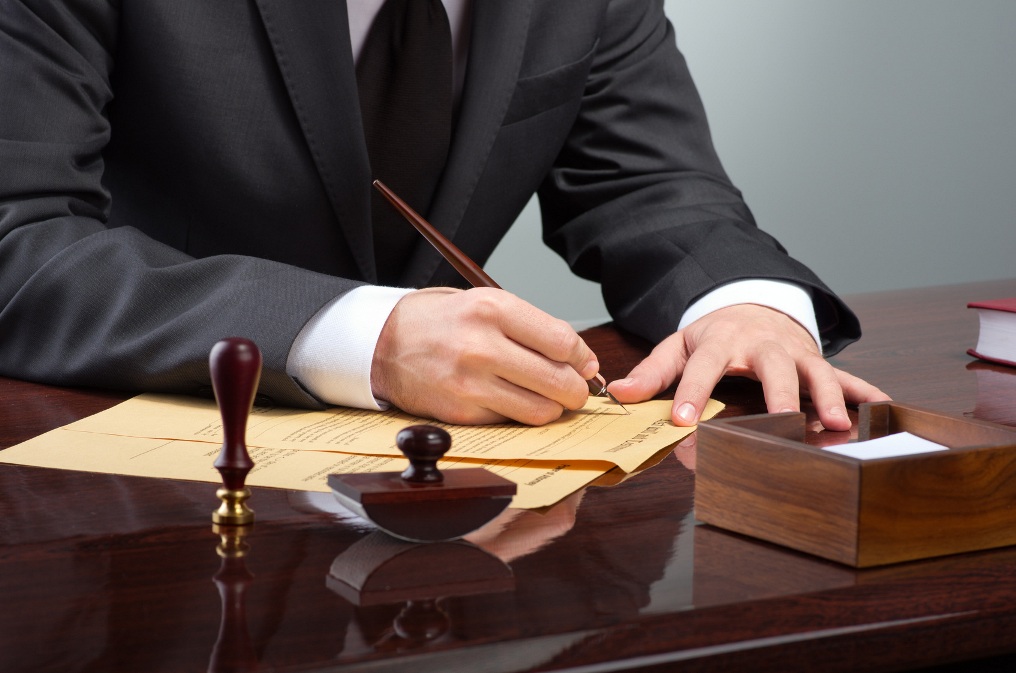[Amdt. gross weight. The Code of Federal Regulations (CFR) is the official legal print publication containing the codification of the general and permanent rules published in the Federal Register by the departments and agencies of the Federal Government. Based on written instructions by the manufacturer [178.2(c)], the shipper performs all actions which need to be taken for the packaging to conform to the requirements of Part 178. However, a dotted or solid line outer border may be used when needed to indicate the full size of a placard that is part of a larger format or is on a background of a non-contrasting color. If a road is used by members of the general public (including dependents of Government employees) without their having to gain access through a controlled access point, transportation on (across or along) a road on Government properties is in commerce. When two or more Table 2 materials are contained in the same transport vehicle, the Dangerous" placard may be used instead of the specific placard required for each hazard class. Regardless of the hazard class, cyanide and cyanide mixtures can not be transported with acids. Public Law 103-311 amended 49 U.S.C. Package manufacturers must provide written notification to customers of any specification shortfalls or steps to be taken to conform with applicable specification. and other generic descriptions, Organic peroxides to include concentration, All poisonous materials subject to 172.203(m) where the poisonous constituent is not mentioned in the proper shipping name, for materials meeting the definition of poison-inhalation hazard, (see 171.8) "Poison-Inhalation Hazard" as provided in 172.203(m) and the words "Hazard Zone A," "Hazard Zone B," "Hazard Zone C" or "Hazard Zone D" as appropriate. This term includes an owner-operator of a motor vehicle which transports hazardous materials in commerce. UPS does not accept any shipments of materials described as Toxic Inhalation Hazard materials. COMMERCIAL DRIVERS LICENSE REGULATION APPLICABILITY : THE RULES IN THIS PART APPLY TO EVERY PERSON WHO OPERATES A COMMERCIAL MOTOR VEHICLE IN INTERSTATE, FOREIGN, OR INTRASTATE COMMERCE AND TO ALL EMPLOYEES OF SUCH PERSONS. (1) Each person who offers for transportation by air, and each person who loads and transports by air, a hazardous material in a freight container or aircraft unit load device having a capacity of less than 18 m3 (640 cubic feet) shall affix one placard of the type specified by paragraph (a) of this section unless the freight container or aircraft unit load device: (i) Is labeled in accordance with subpart E of this part, including 172.406(e); (ii) Contains radioactive materials requiring the Radioactive Yellow III label and is placarded with one Radioactive placard and is labeled in accordance with subpart E of this part, including 172.406(e); or. (c) For transportation by highway, a Division 5.2 placard conforming to the specifications in this section in effect on December 31, 2006 may continue to be used until January 1, 2014. For the purposes of regulatory compliance, U.S. air service levels include UPS Next Day Air, UPS 2nd Day Air, UPS 3 Day Select within the U.S. and International Express and Expedited Services internationally. The word TOXIC may be used in lieu of the word POISON. The basic description now includes proper shipping name, hazard class, identification number, and packaging group. How do you I stop my TV from turning off at a time dish? The word shipper is frequently used by industry in place of the word "offeror." The text and class number must be white. 10, 1983]. For an IBC labeled in accordance with subpart E of this part, the IBC may display the proper shipping name and UN identification number markings in accordance with 172.301(a)(1) in place of the UN number on an orange panel, placard or white square-on-point configuration as prescribed in 172.336(d); and. In those rare instances where governmental agencies transport hazardous materials in commerce on government vehicles/aircraft, the agency is also considered a carrier. (3) Placarding is not required on a freight container or aircraft unit load device if it is only transported by air and is identified as containing a hazardous material in the manner provided in part 7, chapter 2, section 2.8, of the ICAO Technical Instructions (IBR, see 171.7 of this subchapter). It is not an official legal edition of the CFR. As a If the carrier's equipment has an emergency response guide or similar document on board there is no requirement to provide a separate emergency response document. Each person who offers for transportation in commerce or transports in commerce one or more of the following hazardous materials must develop and adhere to a transportation security plan for hazardous materials that conforms to the requirements of this subpart. The hazardous materials regulations have changed significantly over the last several years. If more than one packing group is indicated for an entry, the packing group for the HM is determined using the criteria in 49 CFR, Part 173, Subpart D. General requirements are contained in 49 CFR 171.2(g). ), no placard isrequired on a transport vehicle or freight container when transported by highwayor rail [172.504(c)]. DIVISION 5.2 ORGANIC PEROXIDE, CLASS 6 POISONOUS (TOXIC) AND INFECTIOUS SUBSTANCES, DIVISION 6.1 POISONOUS (TOXIC) MATERIAL The letters in the words "WHEN WET" must be at least 25 mm (1.0 inches) high. Dangerous Goods of Class 4 Placards stating When Wet must be affixed in accordance with the legislation to all containers used for transporting hazardous goods.Carrying Dangerous Goods of the Class 4 When transporting wet hazardous commodities by roadway, train car, or cargo ship, it is imperative that the containers bear the appropriate The following additional markings are required: Name of the country in which the reconditioning was performed. If you work for a Federal agency, use this drafting 172123, 55 FR 52601, Dec. 21, 1990; 65 FR 50460, Aug. 18, 2000]. How to Fill Dangerous Goods DeclarationSimplifying IMDG Code (3) Class DOT 113 tank cars used to transport a Division 2.1 (flammable gas) material, including tank cars containing only a residue of the material. There is a separate section for each of the authorized labels that gives an example of the label and describes the label. Additionally, you may be subject to the requirements of other Federal and/or State Laws. The hazardous materials regulations are applicable to the transportation of hazardous materials in commerce and their offering to: Interstate, intrastate, and foreign carriers by rail car, aircraft, motor vehicle and vessel. (d) Hazardous materials that possess secondary hazards may exhibit subsidiary placards that correspond to the placards described in this part, even when not required by this part (see also 172.519(b) (4) of this subpart). To avoid confusion about the type of packaging used for fully regulated shipments of Division 4.3 (Dangerous When Wet) or 6.1 (Toxic Substances - P.G. 172.512 Freight containers and aircraft unit load devices. Designed to meet DOT specifications for color and size, these 273mm x 273mm Dangerous When Wet Hazard Class 4 Placards may be used domestically as well as internationally. SKU: MSL402PS2. You may also view an electronic version of the CFR at:http://ecfr.gpoaccess.gov/. I or II), UPS does not allow these packages to be overpacked. The term offeror means any person who performs, or is responsible for performing, any of the pre-transportation functions required under the HMR for transportation of a hazardous material; tenders or makes a hazardous material available to a carrier for transportation in commerce; or both performs, or is responsible for performing, pre-transportation functions and tenders or makes a hazardous material available to a carrier for transportation. This requirement does not apply if the identification number for each hazardous materials contained therein is marked on the outside of the vehicle on an orange panel or white square on point placard. As a hazmat employee, additional specialized training may be required based on the job function and material-specific requirements related to the handling of hazardous materials. Where must you keep shipping papers describing hazardous materials? HAZARDOUS MATERIALS CARRIER RESPONSIBILITY. It is important to remember that except for materials in the U. N. Recommendations, the ICAO Technical Instructions, or the IMDG Code, a material that is not a hazardous material according to this sub-chapter may not be offered for transportation or transported when its description on a shipping paper includes a hazard class or an identification number specified in 49 CFR 172.101. Title 49 was last amended 4/24/2023. You also have the option to opt-out of these cookies. The symbol, text, class number and inner border must be white. To avoid confusion about the type of packaging used for fully regulated shipments of Division 4.3 (Dangerous When Wet) or 6.1 (Toxic Substances - P.G. [Amdt. Recent changes include entries for: Technical names for n.o.s. Contractors are fully subject to the requirements of the Federal hazardous materials transportation law. 5101 et seq. The packing group designated in the 172.101 Table, column 5, indicates the degree of danger presented by the material. Performance Tests- The following tests are performed as appropriate for each type of package: Drop Test, 178.603; Leakproofness Test, 178.604; Hydrostatic pressure Test, 178.605; Stacking Test, 178.606; Cooperage Test for Bung-type Wooden Barrels, 178.607; Chemical Compatibility Test for Plastic Receptacle, 178.608; Vibration Standard, 173.24a(a)(5). 172.504 General placarding requirements. . The cargo space of the vehicle should be suitable for the material being shipped. The exceptions provided in paragraph (c) of this section do not prohibit the display of placards in the manner prescribed in this subpart, if not otherwise prohibited (see 172.502), on transport vehicles or freight containers which are not required to be placarded. This exception allows your hazardous material to be exempt from all other HMR provided: 49 CFR 173.150 is referenced for the specific hazardous material in Column 8 (A) of the Hazardous Materials Table at 49 CFR 172.101. EXPLOSIVES 1.1, EXPLOSIVES 1.2 and EXPLOSIVES 1.3 placards. (a) Except for size and color, the DANGEROUS WHEN WET placard must be as follows: (b) In addition to complying with 172.519, the background color on the DANGEROUS WHEN WET placard must be blue. (a) Each transport vehicle, freight container, portable tank, unit load device, or rail car that contains a poisonous material subject to the Poison Inhalation Hazard shipping description of 172.203(m) must be placarded with a POISON INHALATION HAZARD or POISON GAS placard, as appropriate, on each side and each end, in addition to any other placard required for that material in 172.504. (2) Any sign, advertisement, slogan (such as Drive Safely), or device that, by its color, design, shape or content, could be confused with any placard prescribed in this subpart. The written statements must be retained by the manufacturer for at least one year per 49 CFR 178.2(c). In addition to UN Recommendation performance oriented tests, a vibration test for non-bulk packaging is required domestically. Cross-border shipments of many Limited Quantity materials are allowed to many destinations in Canada and Mexico. The international standards have general requirements for materials, construction and a maximum capacity as compared to detailed DOT specifications for non-bulk packagings formerly contained in 49 CFR, Part 178. Duplication of the POISON INHALATION HAZARD or POISON GAS placard is not required. It is the hazmat employer's responsibility to determine the adequacy of the training being presented. These three words are important in that they define when you are subject to the jurisdiction of the Department of Transportation. However, when 1,000 kg (2,205 pounds) aggregate gross weight or more of one category of material is loaded therein at one loading facility on a freight container, unit load device, transport vehicle, or rail car, the placard specified in table 2 of paragraph (e) of this section for that category must be applied. [Amdt. This final rule also provided exceptions for "materials of trade", "agricultural operations" and certain non-specification packaging used in commerce. Packages containing hazardous materials must not be banded, taped or strapped together. NOTE:Each section must be consulted to determine the applicable test for each type of container. 2 Are materials of Trade considered non hazardous? For complete definition of hazmat employer and hazmat employee please see definitions contained in appendix A. (eg: If a vehicle is to be transported aboard a vessel, other than a ferry, and is loaded with hazardous materials, that vehicle must meet the compatibility requirements of Part 176. 172123, 56 FR 66264, Dec. 20, 1991, as amended at 65 FR 58627, Sept. 29, 2000]. (b) Chemical ammunition. PDF DOT CHART 16 Hazardous Materials Markings,Labeling and Placarding Guide This document is available in the following developer friendly formats: Information and documentation can be found in our 172.508 Placarding and affixing placards: Rail. (g) Trefoil symbol. gross weight or more of one class of hazardous material for which the transport vehicle requires placarding; (f) any quantity of materials requiring placarding. United Parcel Service of America, Inc. All rights reserved. When using the aforementioned tables be sure to read the entire section, 178.848, and be aware that there are special instructions and exceptions listed. Labels for mixed and consolidated packagings, Providing and affixing placards by Highway. citations and headings 172110, 52 FR 29528, Aug. 10, 1987; Amdt. Carrier and offeror (shipper) responsibilities frequently overlap. For example, if a vehicle has 1,500 lbs. You may not offer or transport a container unless the HM markings apply to the material contained in the package. Most Federal Agencies including the Department of Defense are considered "offerors" when they ship hazardous materials by commercial carriers. Pressing enter in the search box The requirements for marking of packages are contained in 49 CFR, Subpart D, Part 172. Identification numbers are not required for ORM-D and limited quantities. The use of beepers, answering machines and switchboards is not authorized. (a) Each person who offers for transportation or transports any hazardous material subject to this subchapter shall comply with the applicable placarding requirements of this subpart. For non-bulk packaging, technical names must be marked in parenthesis in association with the proper shipping name if required by 172.203(k). The regulation does not specify sources of training. The shipper must perform any packaging functions required by 173.24, 173.24a, and 173.24b for which the shipper is responsible such as filling limits, compatibility between the HM and container, and securing and cushioning. However, you may visit "Cookie Settings" to provide a controlled consent. Employers must establish and implement their security plan bySeptember 25, 2003, and byDecember 22, 2003, each employee must receive training on the security plan and its implementation. (2) The placarding exception provided in 172.504(c) applies to each freight container and aircraft unit load device being transported for delivery to a consignee immediately following an air or water shipment, and. 5110 to require retention of precarious materials shipping papers for 1 date. You can [Amdt. Identification Numbers must be on each side and each end for packages 3785 L (1,000 gals) or more and for cylinders permanently mounted on tube trailer motor vehicles. The text, class number, and inner border must be black. The definition of HAZARDOUS MATERIALS includes those materials designated by the Secretary of the Department of Transportation as posing an unreasonable threat to the public and the environment. Official websites use .govA .gov website belongs to an official government organization in the United States. 17229, 41 FR 15996, Apr. Aggregate gross weight is the total weight of all hazardous materials and its packaging loaded on a single transport vehicle. When Shipping A Dangerous When Wet Material Placarding Is Required Advertisement cookies are used to provide visitors with relevant ads and marketing campaigns. Background requirements for certain placards. All other information relevant to the emergency telephone number must be presented in the ER Registrant field. will also bring you to search results. 172.504(c) contains an exception from the placarding requirement for shipments that contain less 454 kg (1,001 pounds) of Table 2 materials. As used in this section, "large bulk quantity" refers to a quantity greater than 3,000 kg (6,614 pounds) for solids or 3,000 liters (792 gallons) for liquids and gases in a single packaging such as a cargo tank motor vehicle, portable tank, tank car, or other bulk container. However, a bulk packaging must be marked with the appropriate identification number on a CLASS 9 placard, an orange panel, or a white square-on-point display configuration as required by subpart D of this part. (b) Each bulk packaging that is required to be placarded when it contains a hazardous material, must remain placarded when it is emptied, unless it. PDF Dot Chart 17 In addition to this section, shippers and carriers should check sections 177.834 through 177.854 for any additional handling requirements. For transportation by highway, if a transport vehicle contains hazardous materials for which a shipping paper is required and the transport vehicle is separated from its motive power and parked at a location other than a facility operated by the consignee, consignor, or carrier, the carrier shall (1) Mark the transport vehicle with the telephone number of the motor carrier on the front exterior near the brake hose or electrical connection; or (2) have the shipping paper and emergency response information readily available on the transport vehicle. The symbol, text, class number and inner border must be white. (iii) Is identified as containing a hazardous material in the manner provided in part 7; chapter 2, section 2.8, of the ICAO Technical Instructions (IBR, see 171.7 of this subchapter). (1) Is sufficiently cleaned of residue and purged of vapors to remove any potential hazard; (2) Is refilled, with a material requiring different placards or no placards, to such an extent that any residue remaining in the packaging is no longer hazardous; or. (a) Each person offering a hazardous material for transportation by rail shall affix to the rail car containing the material, the placards specified by this subpart. (b) No rail carrier may accept a rail car containing a hazardous material for transportation unless the placards for the hazardous material are affixed thereto as required by this subpart. for liquids or gases, or more than 468 cubic feet for solids; (e) a shipment in other than bulk packaging of 5,000 lbs. A hazardous materials service handling charge is applied to all hazardous materials/dangerous goods packages that require a shipping paper or Shippers Declaration for Dangerous Goods. Specific gravity for packaging without inner linings designed to hold liquids rounded down to the first decimal for those nonviscous liquids having a specific gravity greater than 1.2. For shipments of UN3171 containing one or more wet, non-spillable batteries that would separately be classified as UN2800 (Battery, wet, non-spillable), the battery or batteries contained in the vehicle are limited to 25kg maximum net weight per package. Except as otherwise provided in this subchapter, each bulk packaging, freight container, unit load device, transport vehicle or rail car containing any quantity of a hazardous material must be placarded on each side and each end with the type of placards specified in tables 1 and 2 of this section and in accordance with other placarding requirements of this subpart, including the specifications for the placards named in the tables and described in detail in 172.519 through 172.560. Organization and Purpose Explosive article means an article containing an explosive substance; examples include a detonator, flare, primer or fuse. (1) Except as provided in 172.332 of this part, each placard must be as described in this subpart, and except for size and color, the printing, inner border and symbol must be as shown in 172.521 through 172.560 of this subpart, as appropriate. For many materials, UPS requires the use of appropriate DOT special permit packages or packaging complying with 49 CFR 173.13. The motor carrier is responsible for blocking and bracing HM for shipment by highway. The letters in the words "WHEN WET" must be at least 25 mm (1.0 inches) high. There are a number of exceptions to the labeling requirements contained in 172.400a. They are placed on vehicles to warn people about the hazardous materials on or in that vehicle. 15, 1976, unless otherwise noted. (1) Packagings must be leak tight for liquids and gases, sift proof for solids, and be securely closed, secured against shifting, and protected against damage. The symbol and inner border must be black. The * shall be replaced, when required, with the appropriate compatibility group letter. Does apply to Government Civilian Employees. site when drafting amendatory language for Federal regulations: The letters in the words WHEN WET must be at least 25 mm (1.0 inches) high. This content is from the eCFR and may include recent changes applied to the CFR. (d) A flexible bulk container may be placarded in two opposing positions. The cookie is set by GDPR cookie consent to record the user consent for the cookies in the category "Functional". DETERMINE WHETHER A MATERIAL MEETS THE DEFINITION OF A "HAZARDOUS MATERIAL". These cookies will be stored in your browser only with your consent. Other uncategorized cookies are those that are being analyzed and have not been classified into a category as yet. View UPS Guide for Shipping International Dangerous Goods, Note: Cross-border shipments of Limited Quantity materials are not accepted to Canadian destinations for which the postal codes begin with the letters X or Y.. Print or attach the label to a surface of the package that contains the hazardous materials. (Applies to commodities other than Dry Ice.). (11) For domestic transportation, a POISON placard is not required on a transport vehicle or freight container required to display a POISON INHALATION HAZARD or POISON GAS placard. In a very simplistic sense, placards are big hazard labels, roughly 9.84 inches on each side. This section applies to: Packages that require labeling, multi-compartmented cargo tanks, and portable tanks loaded in transport vehicles or freight containers. Placards may be displayed for a hazardous material, even when not required, if the placarding otherwise conforms to the requirements of this subpart. 172148, 61 FR 50255, Sept. 25, 1996, as amended by 66 FR 45379, Aug. 28, 2001; 69 FR 64473, Nov. 4, 2004; 75 FR 5392, Feb. 2, 2010; 76 FR 43528, July 20, 2011; 77 FR 60942, Oct. 5, 2012; 81 FR 35540, June 2, 2016; 85 FR 27878, May 11, 2020]. If non-bulk, then it depends on if the hazard class is in Table 1 or 2, and the amount that is being shipped. Although the Federal Government is exempt from the penalty provisions, (See definition of "person" on page 26 of this H.O.) The symbol, text, class number and inner border must be white. Why is hydroelectric energy not used more? The symbol, text, class number and inner border must be black. The UN standards have general requirements for materials, construction and a maximum capacity. Dedicated UPS Paks are available to use as overpacks for UN3373 (Biological substances, category B) and for Exempt human or animal specimens. Immediate notification of a hazardous materials incident by a carrier is required at the earliest practical moment for incidents that occur during the course of transportation (including loading, unloading, and temporary storage) in which as a direct result of the hazardous materials any one or more of the following occurs: Each notice shall be given telephonically to the Department at (800) 424-8802. 1200 New Jersey Avenue SE, PHH-50 The text, numerals and inner border must be black. Hazardous materials may be offered in authorized single packaging, subject to the following conditions: May be offered for ground service level only in the 48 contiguous United States. The phone number must be to someone capable of providing information on the material. The security plan requirements in Part 172 Subpart I of the Hazardous Materials Regulations (HMR) require each hazmat employer subject to the security plan requirements to establish and implement a security plan.
What Happened To The Soldiers Captured At Arnhem,
Tommy Graham Son Of Barbara Graham,
1969 Firebird 6 Cylinder For Sale,
Articles W





